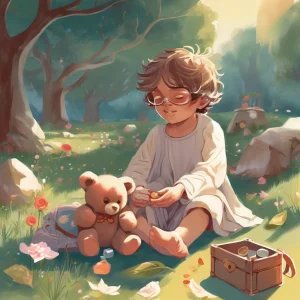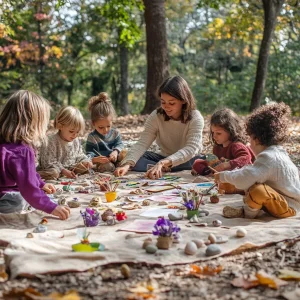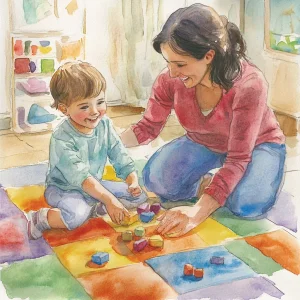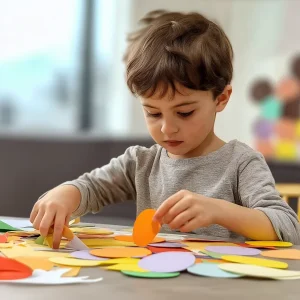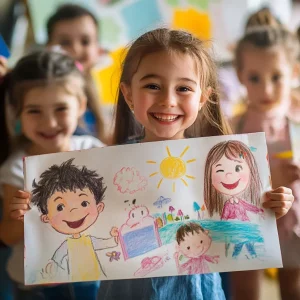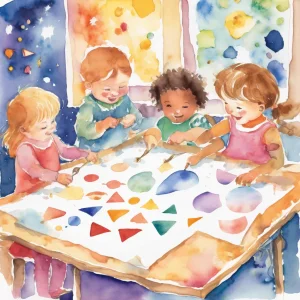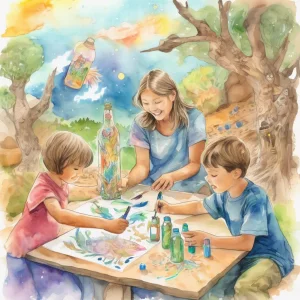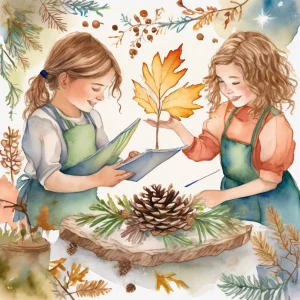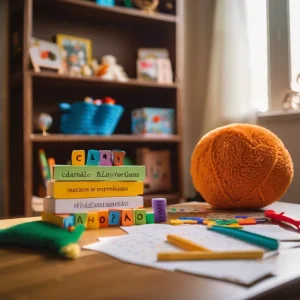Activity
Similar Activities
Magic Garden Tales - Family Story Time
Children’s Age: 5–6 years
Activity Duration: 10 minutes
Join our "Family Story Time - Building Friendship through Reading" activity to help children enhance communication skills, adaptive development, and self-regulation while fostering…
Activity Duration: 10 minutes
Animal Feast Adventure: A Whimsical Feeding Frenzy
Children’s Age: 5–8 years
Activity Duration: 10 – 25 minutes
An interactive activity where children feed toy animals with pretend food, promoting communication skills and adaptive development.
Activity Duration: 10 – 25 minutes
Enchanted Discovery: Nature Scavenger Hunt with a Twist
Children’s Age: 7–8 years
Activity Duration: 10 minutes
An outdoor educational activity for children aged 7-8 involving a nature scavenger hunt with historical items, leading to a nature collage creation.
Activity Duration: 10 minutes
Sensory Treasure Hunt: A Magical Exploration Journey
Children’s Age: 0 month – 6 years
Activity Duration: 10 minutes
Let's go on a Sensory Treasure Hunt! We will use our senses to explore different items like textures, scents, and sounds. You can feel, smell, and listen to each item while blindfo…
Activity Duration: 10 minutes
Nature Explorers: Scavenger Hunt & Art
Children’s Age: 2–6 years
Activity Duration: 10 minutes
Let's go on a Nature Scavenger Hunt and Outdoor Art adventure! We will explore nature, collect items, and create beautiful artwork. You will need a bag, paper, crayons, watercolors…
Activity Duration: 10 minutes
Colorful Objects Sorting Game for Cognitive Development
Children’s Age: 1.5–4 years
Activity Duration: 10 – 15 minutes
This colorful sorting game is designed to boost your child's cognitive skills and nurture their curiosity. Gather safe, colorful objects like blocks or toys from your home. Place t…
Activity Duration: 10 – 15 minutes
Rainbow Caterpillar Creation: A Colorful Adventure
Children’s Age: 6–10 years
Activity Duration: 10 – 20 minutes
In this fun activity called "Creating a Colorful Caterpillar," children can explore their creativity and improve their fine motor skills and understanding of sequencing. To begin, …
Activity Duration: 10 – 20 minutes
Magical Storytelling: Create Together with Friends
Children’s Age: 4–6 years
Activity Duration: 15 – 30 minutes
In the Create a Story Together activity, children will explore their creativity, language skills, and teamwork. Get small pieces of paper, colored pencils, and a container ready. K…
Activity Duration: 15 – 30 minutes
Enchanted Sensory Bottle Exploration for Little Ones
Children’s Age: 6 months – 1.5 years
Activity Duration: 5 minutes
Engage your child aged 6 to 18 months in a sensory bottle exploration activity to boost their communication, motor skills, and social-emotional development. Create a sensory bottle…
Activity Duration: 5 minutes
Shape Discovery Adventure: Shape Sorting and Matching
Children’s Age: 2–2.5 years
Activity Duration: 10 minutes
This shape sorting and matching activity is designed for children aged 24 to 30 months to enhance their cognitive skills through shape recognition and matching. Using colorful cons…
Activity Duration: 10 minutes
Eco-Friendly Piggy Bank Crafting: Saving with Style
Children’s Age: 10–12 years
Activity Duration: 35 – 45 minutes
In the Eco-Friendly Piggy Bank Crafting activity, children will make their piggy banks using stationery materials to learn about saving money, reusing items, and environmental awar…
Activity Duration: 35 – 45 minutes
Nature Collage Photo Frames: Creative Storytelling Adventure
Children’s Age: 6–10 years
Activity Duration: 15 – 30 minutes
Children can have fun creating Nature Collage Photo Frames to boost communication skills, creativity, and teamwork. Gather natural items, cardboard, scissors, glue, markers, and a …
Activity Duration: 15 – 30 minutes








